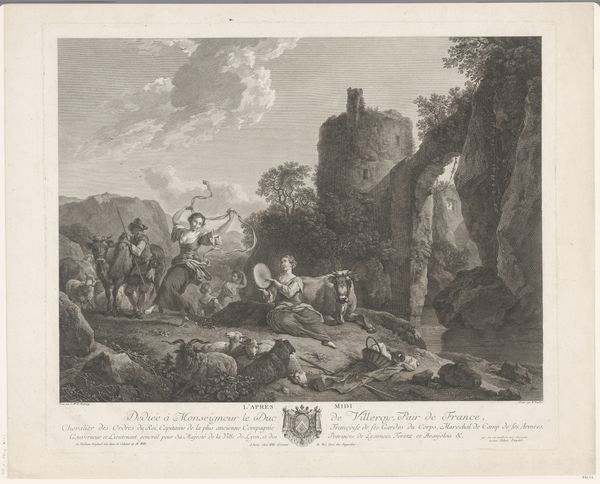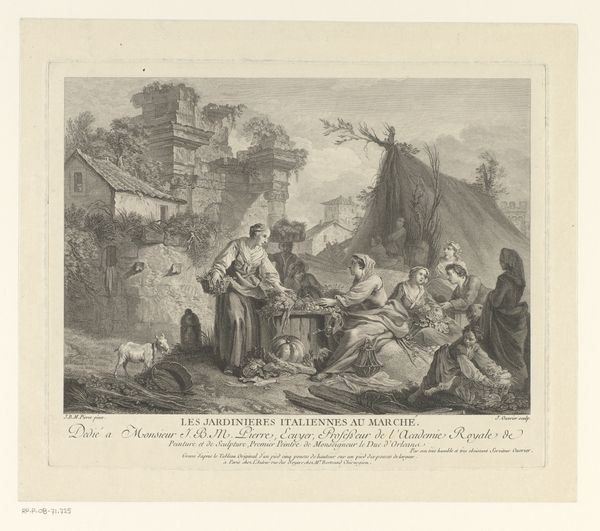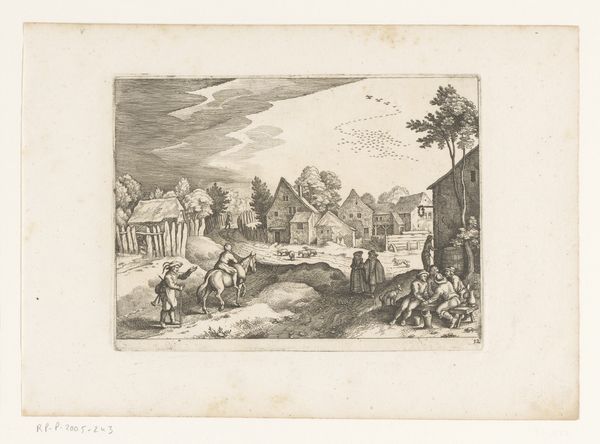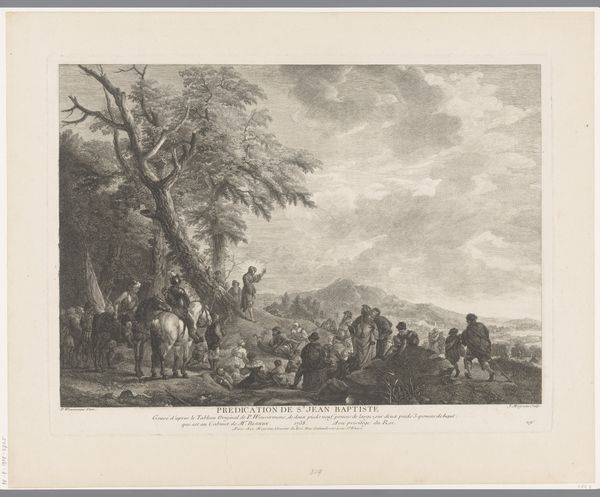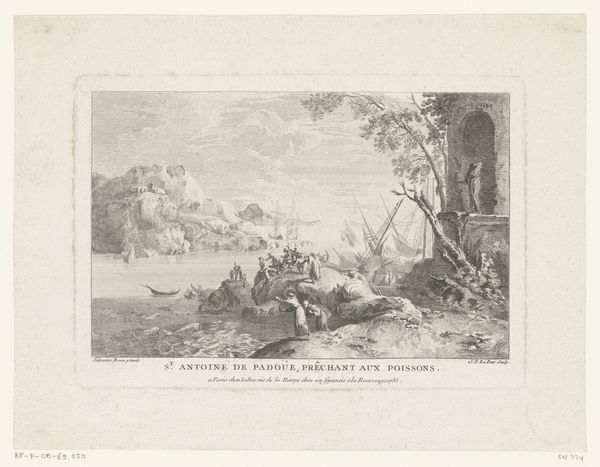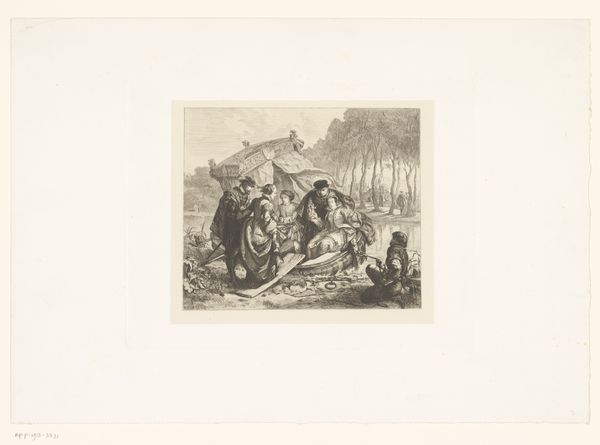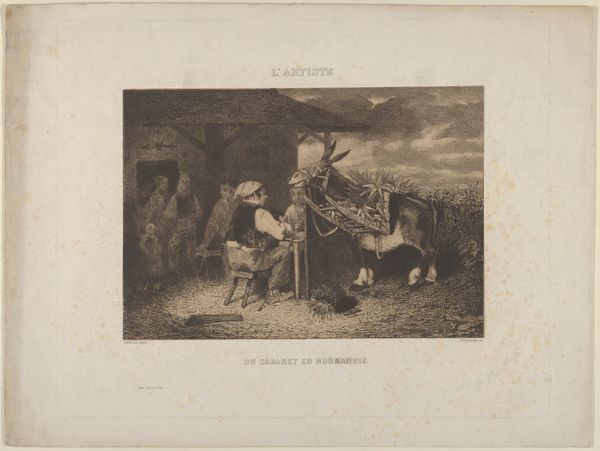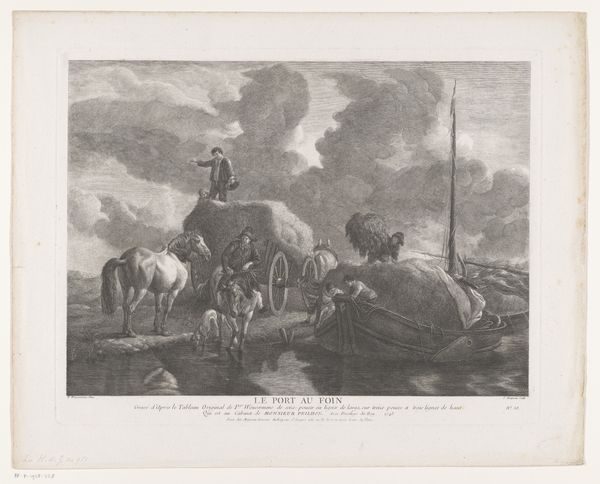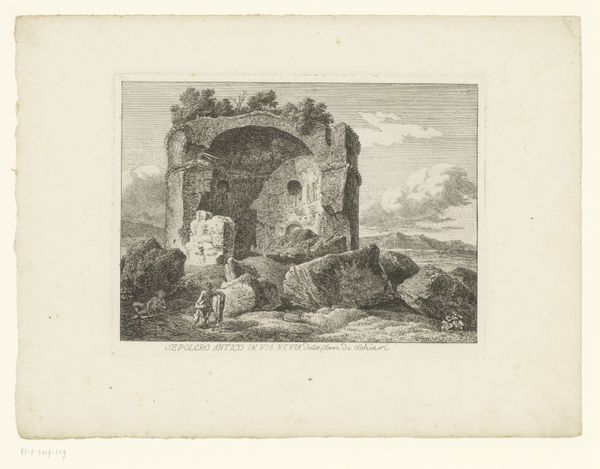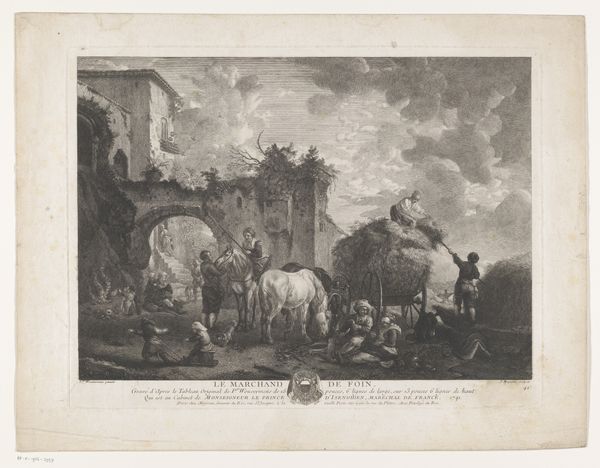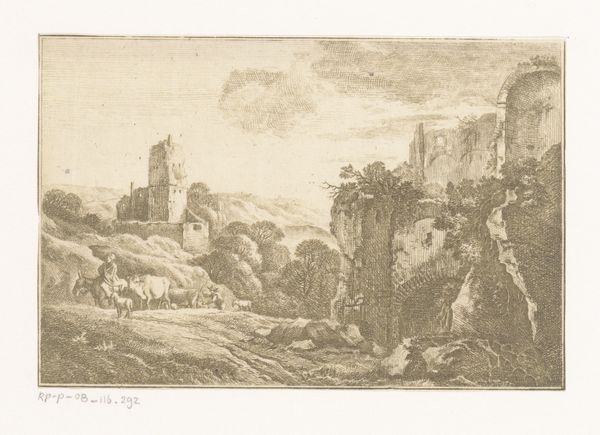
print, engraving
#
neoclacissism
# print
#
old engraving style
#
landscape
#
genre-painting
#
engraving
Dimensions: height 294 mm, width 345 mm
Copyright: Rijks Museum: Open Domain
Curator: This print, "Herders aan de Napolitaanse kust," or "Shepherds on the Neapolitan Coast", is attributed to Jean Jacques Le Veau. Created sometime between 1739 and 1788, it's an engraving that offers us a glimpse into an idealised vision of rural life. Editor: My initial feeling is one of tranquil contemplation. The soft grays, the gentle forms of the sheep, and the crumbling architecture create a pastoral scene bathed in a nostalgic light. Curator: Precisely. The choice of engraving as a medium and Le Veau's Neoclassical style play into that mood. Consider how this print likely circulated, reaching a wide audience hungry for images that evoked a simpler past. The socio-political context of the time, with growing industrialisation, definitely fed into this yearning. Editor: Yes, but it's a curated simplicity, isn't it? The scene, while depicting a supposed everyday moment for these shepherds, is positioned within the ruins of what appears to be classical architecture. The association, then, connects their rural life with this lost and idealised period, perhaps suggesting a commentary on social change. What power relations do we observe between man and animal in the image, and how might that reveal broader concerns within society about hierarchies? Curator: An insightful point. We can’t ignore that idealized imagery also served a political purpose, potentially distracting from harsher realities. This representation arguably romanticizes a socio-economic structure rife with disparities, doesn't it? The focus shifts from labor itself to this idea of tranquility, concealing other aspects of the lives and environment that shaped their everyday experience. Editor: Definitely. Although its beauty captivates, critical investigation uncovers potential commentary about power dynamics and perhaps veiled political implications within what at first seems a simple landscape, revealing a complicated relationship with themes of change and romanticizing tradition. Curator: Looking closer then, "Herders aan de Napolitaanse kust" encourages us to analyze both the artistry and the underlying societal context that made this idealized vision so resonant. Editor: Indeed. It reminds us that even the most serene landscapes can carry a multitude of layered perspectives and messages for diverse audiences throughout time.
Comments
No comments
Be the first to comment and join the conversation on the ultimate creative platform.
